IN ASSOCIATION WITH TIMOTHY TAYLOR’S
The 25 best gadgets from 25 years of Stuff
This is a countdown of our favourite modern tech, including cracking consoles, fabulous phones, spanking speakers and more. Here are the greatest gadgets of Stuff's lifetime.
IN ASSOCIATION WITH TIMOTHY TAYLOR’S

06 Sony PlayStation 2
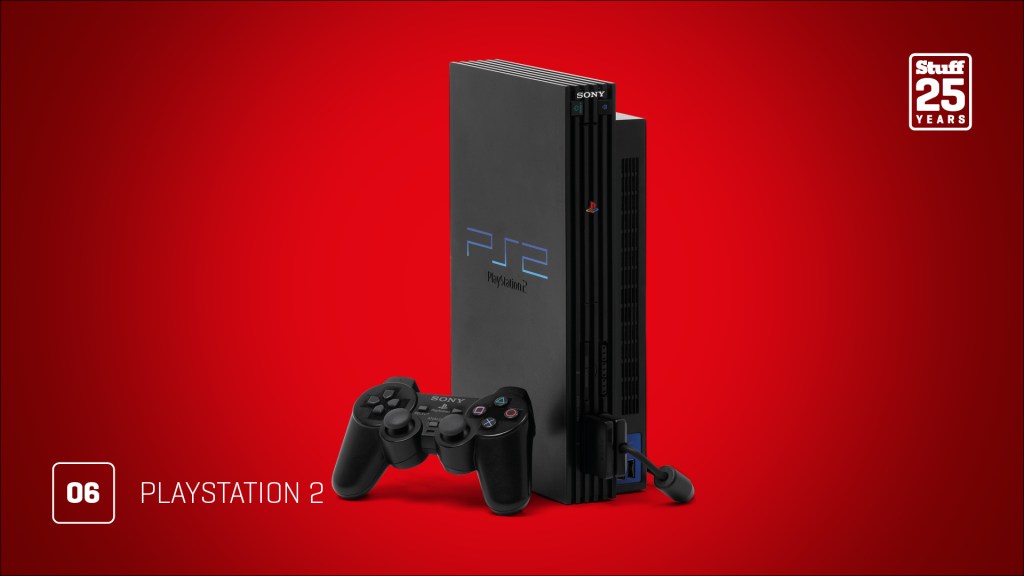
Affectionately dubbed Darth Vader’s toaster upon its 2000 release, this monolithic black slab, which could be orientated vertically or horizontally, was useless at making toast. But it did battle off stiff competition from the Dreamcast, Xbox and GameCube to become the pre-eminent console of the early noughties.
With its DVD drive and Emotion Engine CPU, the PS2 could tap into great reserves of power. It also
had network functionality for online gaming – perhaps a little too far ahead of the curve for Sony (and our dial-up speeds), but a sign of things to come from future consoles. With dedicated DVD players being mighty pricey back in 2000, the PS2’s secondary role as an affordable home entertainment machine shouldn’t be overlooked.
Buoyed along by huge exclusive titles like Metal Gear Solid 2: Sons of Liberty, Shadow of the Colossus, God of War and Grand Theft Auto III, the PS2 shifted well over 150 million units over its 13-year lifespan, making it the best-selling dedicated games machine of all time.
RELEASED 2000
05 Nintendo Wii
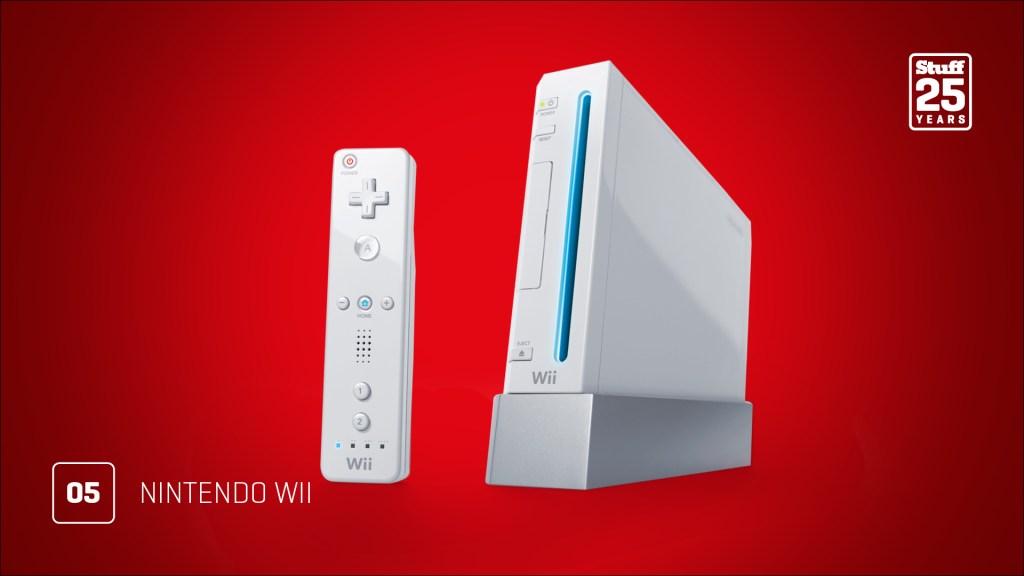
Games developer Chris Hecker one famously said the Wii was just two GameCubes taped together. But those two GameCubes went on to become the best-selling home games console of all time… if you, ahem, exclude all PlayStations.
The Wii pulled off the same trick with games as the iPhone did with apps: bringing in people who weren’t previously interested. Wii Sports was bundled with every console in the UK, with its intuitive motion-controlled takes on tennis and bowling. Curious non-gamers aged 5 to 85 rolled up for the fun – you just had to make sure to attach the Wiimote strap, or budget for a new telly.
Wii Fit and its surprisingly great Balance Board sold 20 million copies, jump-starting the idea that fitness and gaming can mix. The Wii had great ‘gamer’ games too, but its most notable successes were looking far beyond that crowd.
RELEASED 2006
04 Raspberry Pi
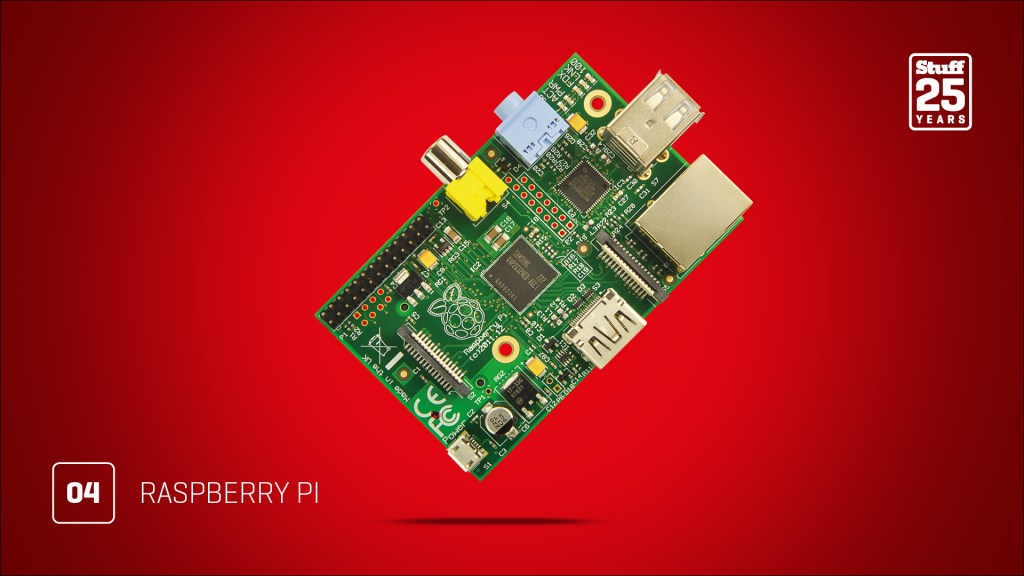
Long before Stuff was even a glimmer in a publisher’s eye, the UK was a major player in computer hardware. Great rivals like Acorn and Sinclair clashed, before giants from both east and west arrived to crush them underfoot.
David Braben was a part of that scene, as co-creator of the genre-defining Elite. But by the 2000s, Braben was concerned about the complexity of computing. In an interview with the BBC’s Rory Cellan-Jones, he said: “There’s so much between you and doing something interesting and creative.”
Devised with colleagues, the Pi was Braben’s solution. It was a computer on a USB stick. You could plug it into a TV and learn to program, or bolt on sensors and components to dig into electronics. It was about experimentation, not just consumption – a core tenet of 1980s home micros. The Pi’s GPIO header was where the fun began, letting you connect and control electronics. And despite its tiny size and low cost, the original Raspberry Pi Model B didn’t skimp on specs, giving you 256MB of RAM and a 700MHz CPU.
A key difference, though, was the Pi’s pocket-money price point: $35. This was later taken to the extreme by the Pi Zero, a $5 board cheap enough to appear as a free gift on the cover of the MagPi magazine.
Pi Foundation co-founder Eben Upton once remarked 10,000 Pi boards might be sold “in our wildest dreams”. The current figure is north of 40 million. Solid numbers for sure, but this represents something far greater: the means for a generation so often locked out of hardware to fiddle around with cheap computers and integrate them into their own experimental gadgets.
RELEASED 2012
03 Sony PlayStation 4
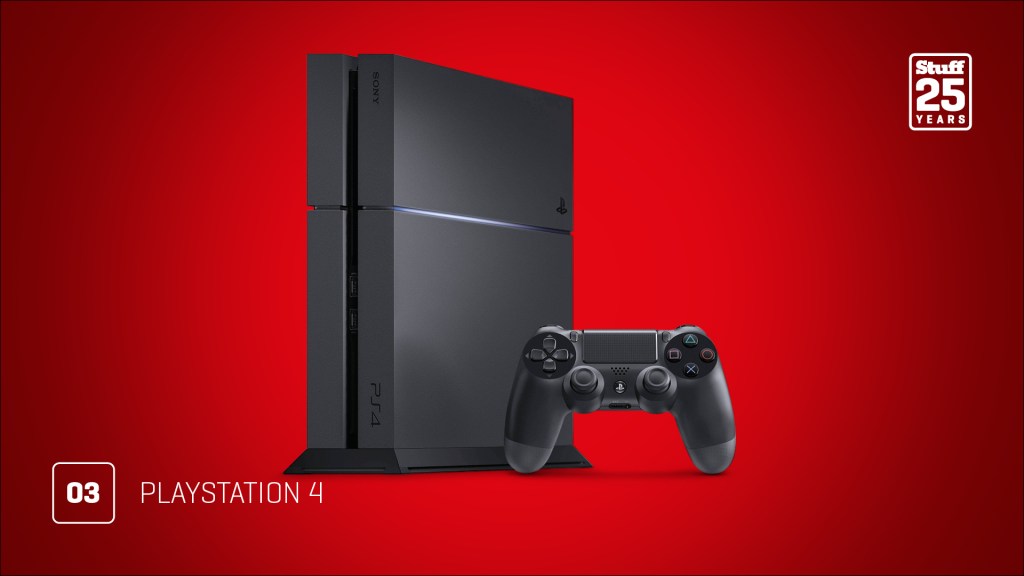
We’re guessing it didn’t take too many brainstorms to come up with a name for the follow-up to the PlayStation 3… but a tad more importantly, after a console generation dominated by Microsoft’s Xbox 360, Sony had to get this one right. And it did.
While the PS4’s launch brought few surprises, its sheer solidity as a games machine, coupled with Microsoft’s daft pitching of the Xbox One as a DVR that also happened to play games (just don’t try and swap any with your mates, OK?), gave Sony’s machine an early start from which its rival never recovered.
Sony’s success was built on a rock-steady foundation of astonishing exclusives like Bloodborne, Horizon Zero Dawn, God of War and The Last of Us Part II; Microsoft’s first-party titles just couldn’t compete. But there was innovation in the PS4 too: PlayStation VR, still the only real console VR system, got its start here, while the DualShock 4’s touchpad, light bar and speaker added extra immersion to a whole slew of games. The controller was designed with input from Halo creators Bungie, a developer formerly owned by Microsoft.
Then there was the PS4 Pro, a premium version with more graphical grunt and processor power. Some took Sony’s two-tiered approach as a sign of weakness – well, how many gamers would be happy to feel left in the slow lane with a ‘basic’ PS4? – but nobody who got the frame-rate and resolution boosts from the PS4 Pro’s version of a game was complaining.
RELEASED 2013
02 Amazon Kindle
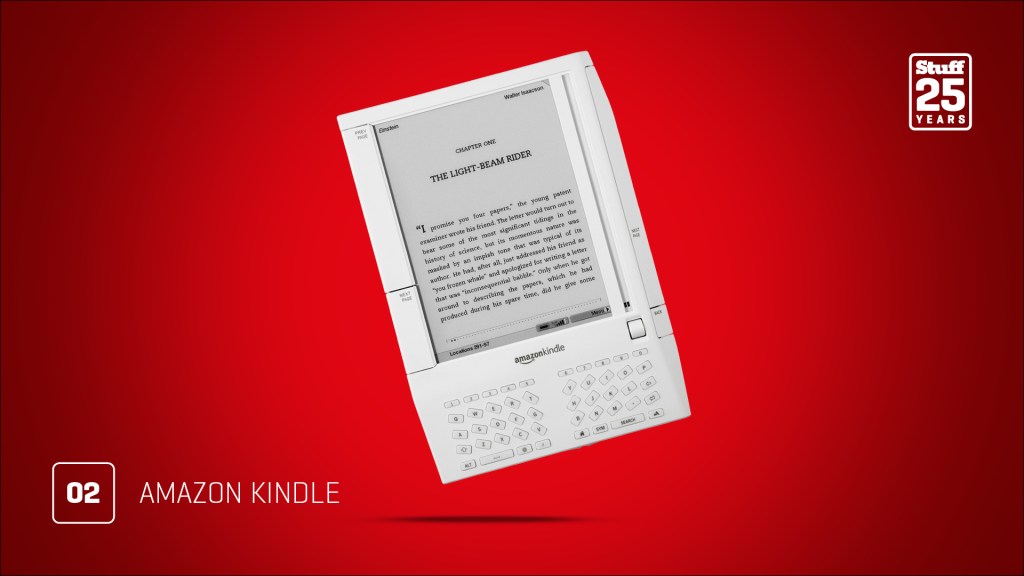
Long before it expanded into today’s world-chomping retail behemoth, Amazon was merely a big online bookshop. No surprise, then, that the company’s first ever gadget was all about reading.
The Kindle arrived in the USA in November 2007, pitched as an iPod for books… and immediately sold out, remaining unavailable for five months. Amazon, clearly, was onto something. The device had only 250MB of built-in storage, but that was still room enough for about 200 novels. In other words, with a Kindle you could carry a whole library in your pocket.
But the highlight was the E Ink screen, more ‘realistic’ and eye-friendly than a backlit LCD and ideal for long reading sessions. The screen used battery power only when you turned the page, so a full charge could keep it going long enough to read the complete works of Shakespeare. Including the boring ones. The wedge-shaped original Kindle’s slanted right side provided a larger gripping area, apparently designed to mimic a folded book, while the awkward physical keyboard didn’t make it past the third-gen Kindles; it was replaced in later models with touchscreen tech.
In a move typical of Amazon, the device was only really compatible with e-books purchased from the Kindle Store itself, meaning every owner was pretty much obliged to hurl yet more dollars into the gaping maw of Jeff Bezos’s cash-beast.
But the simplicity of the Kindle was always admirable. You won’t ever find a web browser or app store to muddy the waters here. Over 10 generations it’s never strayed from its core job of being an e-reader, and it’s still the best around.
RELEASED 2007
01 Apple iPhone
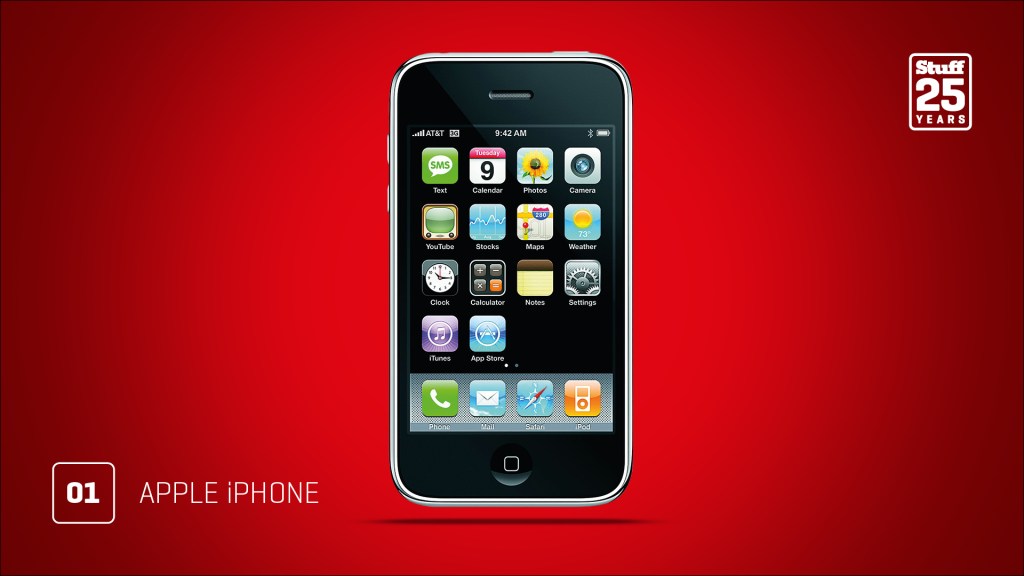
Say what you like about Steve Jobs, but he sure knew how to make nerds whimper. And this may have been his finest theatrical reveal of all.
On 9 January 2007, Jobs stood on stage and said Apple was introducing three products: “A widescreen iPod with touch controls, a revolutionary mobile phone and a breakthrough internet communications device. An iPod. A phone. And an internet communicator. An iPod. A phone… Are you getting it?” Things clicked, and the audience started to whoop. Jobs confirmed that these weren’t separate devices, but one. The iPhone.
An instant smash? In fact, Apple was derided by many at the time. Steve Ballmer, then in charge of Microsoft, laughed off the iPhone, predicting it wouldn’t sell because it was “not a very good email machine”. Initially, Apple provided apps with the iPhone; but until the App Store arrived in 2008, third parties could only offer web software.
Ballmer was wrong, and so were many others – few recognised that, as with the original Mac, Apple had created something truly revolutionary. Google was an exception, seeing which way the wind was blowing and pivoting Android from a BlackBerry competitor to fall in with Apple’s vision.
In today’s world of black rectangles, it’s easy to forget how disruptive the original iPhone was. Beforehand, smartphones weren’t that smart. They were fiddly. Apps were limited. Devices couldn’t actually do much.
The iPhone was different: a blank canvas designed to become anything you wanted it to be. Although the original wasn’t fully baked – the App Store would arrive later, and it was a while before Apple would become dominant in photography – the original rear camera shot titchy 2MP images – yet sheer handiness meant this became the most popular camera on Flickr. this is the one device from Stuff’s history that changed everything about how we interact with technology.
RELEASED 2007
